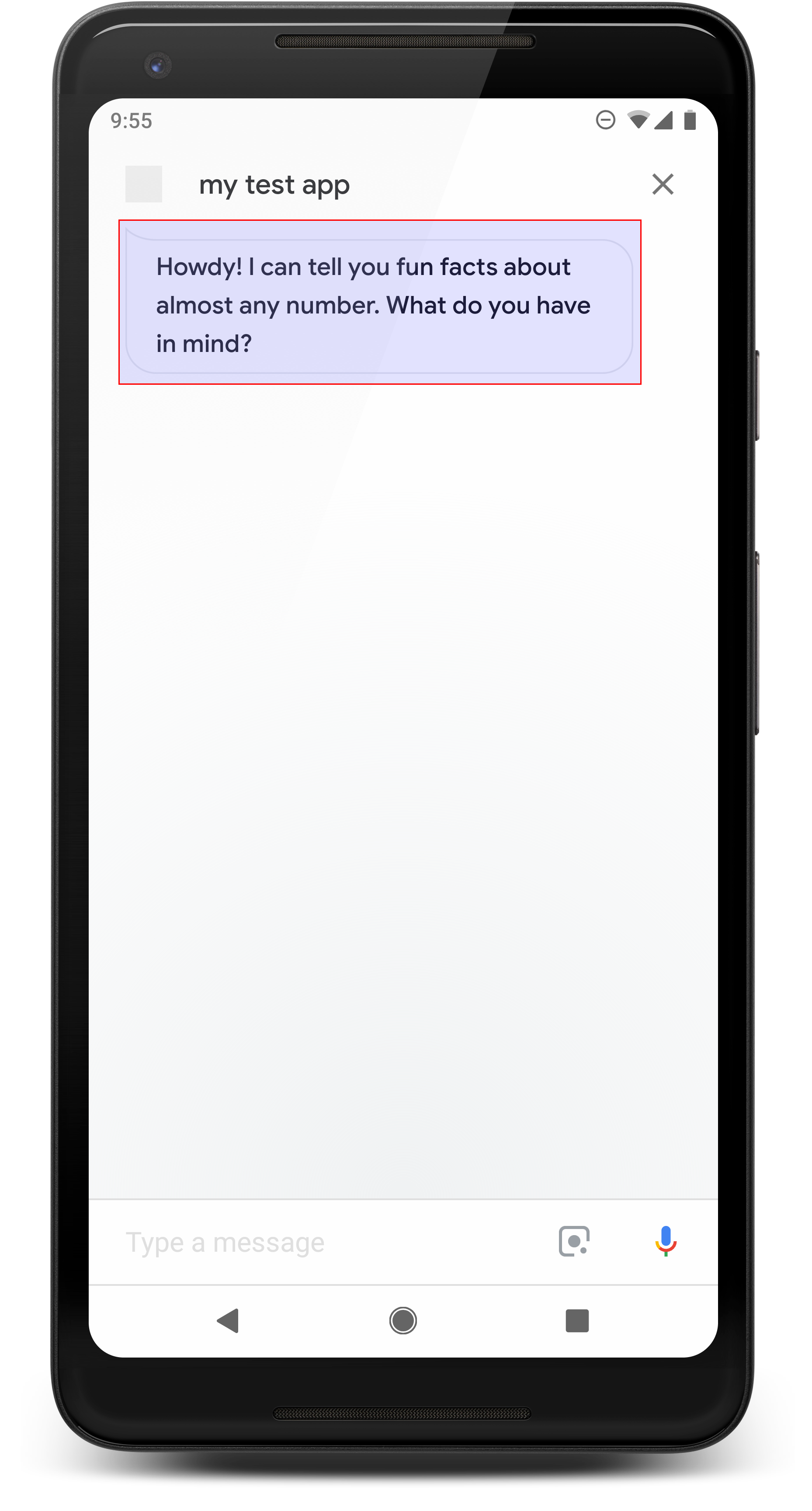
Proste odpowiedzi przybierają formę dymka czatu i wykorzystują zamianę tekstu na mowę. (TTS) lub Speech Synthesis Markup Language (SSML) Za pomocą krótkich prostych odpowiedzi w rozmowie, możesz utrzymać zaangażowanie użytkowników dzięki przejrzystej i interfejsu audio, które można połączyć z innymi elementami konwersacyjnymi.
Treść dymka czatu w prostej odpowiedzi musi być fonetycznym podzbiorem lub pełnym transkrypcja danych wyjściowych TTS/SSML. Pomaga to użytkownikom określić, co mówi i pomaga zrozumieć różne warunki.
W prompcie wpisz tekst podany w obiektach first_simple i last_simple
korzystają z właściwości prostej odpowiedzi. Asystent Google wysyła wszystko proste
i wysyła ostateczną odpowiedź rozszerzoną w kolejce promptów.
Właściwości
Typ prostej odpowiedzi ma te właściwości:
| Właściwość | Typ | Co musisz zrobić | Opis |
|---|---|---|---|
speech |
ciąg znaków | Opcjonalnie | Reprezentuje słowa, które mają być wypowiadane użytkownikowi w technologii SSML lub zamiany tekstu na mowę.
Jeśli pole override w wyświetlanym promptie ma wartość „true” (prawda),
wówczas mowa zdefiniowana w tym polu zastępuje poprzednie proste
na głos promptu. |
text |
ciąg znaków | Opcjonalnie |
Tekst do wyświetlenia w dymku czatu. Ciągi tekstowe dłuższe niż 640 znaków są obcinane przy pierwszym podziale słowa (lub odstępach) przed 640 znaków. Aby zapobiec treści wykraczające poza ekran, zwłaszcza po sparowaniu z lub innym elementem wizualnym. Jeśli nie zostanie podana, Asystent renderuje wyświetlaną wersję interfejsu
|

Przykładowy kod
YAML,
candidates: - first_simple: variants: - speech: This is the first simple response. text: This is the 1st simple response. last_simple: variants: - speech: This is the last simple response. text: This is the last simple response.
JSON
{ "candidates": [ { "first_simple": { "variants": [ { "speech": "This is the first simple response.", "text": "This is the 1st simple response." } ] }, "last_simple": { "variants": [ { "speech": "This is the last simple response.", "text": "This is the last simple response." } ] } } ] }
Node.js
app.handle('Simple', conv => { conv.add(new Simple({ speech: 'This is the first simple response.', text: 'This is the 1st simple response.' })); conv.add(new Simple({ speech: 'This is the last simple response.', text: 'This is the last simple response.' })); });
JSON
{ "responseJson": { "session": { "id": "session_id", "params": {} }, "prompt": { "override": false, "firstSimple": { "speech": "This is the first simple response.", "text": "This is the 1st simple response." }, "lastSimple": { "speech": "This is the last simple response.", "text": "This is the last simple response." } } } }
SSML i dźwięki
Używaj w odpowiedziach SSML i dźwięków, aby dopracować odpowiedzi użytkowników. Więcej informacji znajdziesz w dokumentacji SSML.
Biblioteka dźwięków
W naszej bibliotece dźwięków znajdziesz wiele bezpłatnych, krótkich dźwięków. Te dźwięki są hostowane za Ciebie, więc wystarczy, że uwzględnisz je w SSML.

